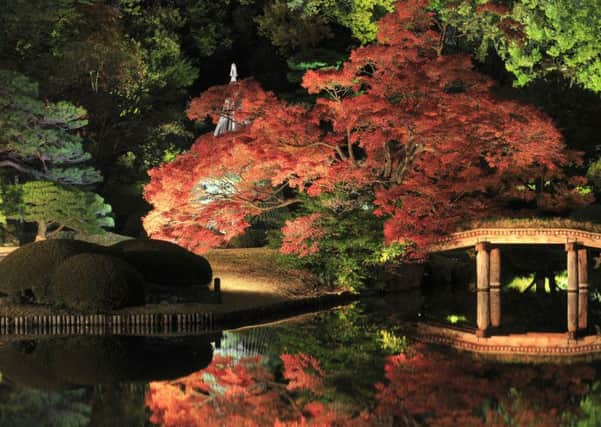Amazing acers


Of course, these delicate-looking beauties look wonderful in classically tiered Japanese-themed gardens, overhanging water, blending with other shrubs that like acid soil, including azaleas and shade-loving mosses and ferns, which will grow underneath the feathery cover of the acer foliage.
But the many cultivars can also be grown in smaller gardens and in pots, providing texture, colour and immense architectural value from spring to autumn when their leaves will eventually fall, as nearly all acers are deciduous.
Advertisement
Hide AdAdvertisement
Hide AdWhen choosing an acer, take careful note of its shape, bearing in mind where you want to plant it. Many have already been pruned into what will become a dome-like shape, with few branches at the base. Others will afford a more upright position, which might be better depending on where you want to place them.
Many cultivars are excellent grown in containers. The restricted root space will keep them compact, while less hardy varieties can be moved to a sheltered position close to the house in the coldest months.
Plant them in full sun, provided the soil is not excessively dry, or dappled shade. They are perfect specimens to grow under the gentle shade of larger trees, provided the earth isn’t swamped in the roots of the bigger specimens. They prefer acid soil, so when planting, dig in some ericaceous compost to give them a good start.
Try to keep them out of biting winds, which can burn their delicate foliage and keep them well watered until they are established.
Advertisement
Hide AdAdvertisement
Hide AdIf you are planting in pots, use a container at least 30cm in diameter and a compost comprising equal parts John Innes No 2 and a soil-less multi-purpose compost. Maples grown in containers require more care than those planted in open ground, because the roots can’t grow deep down in search of water and nutrients.
Water container plants regularly, probably daily during dry spells, and top-dress the container annually in early spring to remove weeds from the surface layer. I always take the top few inches of compost off my potted acer and replace it with new compost.
Repot the acer every three to five years if you can prise it from the container, replanting it into either the same or a slightly larger container. Tease out the roots, and cut back any large coarse ones before replanting it into a new container, then fill in with fresh compost so the root ball sits at the same level as before.
Good container specimens include A. palmatum ‘Garnet’, a feathery deep red type which grows to around 2m and whose leaves turn a vivid lighter red in autumn, and A. palmatum var. dissectum, a dome-shaped bush of finely cut mid-green leaves which looks great if the branches hang over water and whose leaves turn golden in autumn.
Advertisement
Hide AdAdvertisement
Hide AdThose that will make showstoppers in the ground include A. palmatum ‘Bloodgood’, whose aubergine-coloured leaves turn bright red in autumn, and A. palmatum ‘Sango-kaku’, a good all-rounder with orange-yellow leaves in spring, which turn green and finally orange and red in autumn.
Japanese maples do not require much pruning. Just snip out any dead shoot tips as the buds open in spring. Remove badly placed and crossing shoots to maintain a well-balanced shape and cut out any dead or diseased wood from late autumn to mid-winter, or in spring for plants in containers.